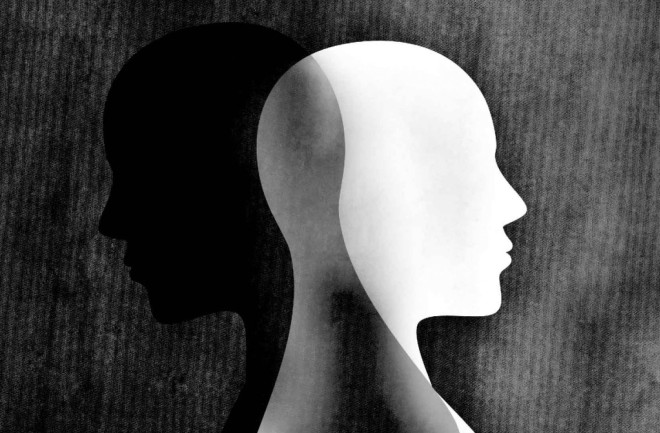If stories about psychopaths fascinate you, you might’ve heard of something called the dark triad. It’s a trio of traits that psychologists developed in the early 2000s to measure the more sinister aspects of human personality. Now, a team from the University of Pennsylvania and the University of Hawai’i-West O’ahu has finally crafted a counterpart test of the so-called light triad traits.
Dark Vs. Light
Given the human tendency toward morbid curiosity, it’s no surprise we’ve got a test for the most chilling traits: narcissism, Machiavellianism and psychopathy.
People who score high on narcissism tend to be more self-absorbed and entitled; those who test high on Machiavellianism are more likely to be manipulative and deceitful in order to get their way; people who skew toward psychopathy are less likely to be able to empathize or feel guilt. (Though in this context, psychopathy doesn’t necessarily mean you’re a psychopath by clinical standards — there’s a separate test for that. You can read more about it, and the man who developed it, here.)
Like any other personality trait, they’re not black or white — they exist on a spectrum. And in recent years, the nature of humans’ good side has been getting some attention, too. More and more studies are investigating things like generosity, altruism and empathy. But most of the work on this human nature spectrum has only been concerned with one end or the other, according to the authors of the study, published in Frontiers in Psychology.
“What is missing in the field, we believe, are empirical investigations that include measures of the dark side and measures of the light side,” they write in their paper.
So the team, led by Scott Barry Kaufman, a psychologist at Barnard College in New York, decided to do something about it. They developed what they call the light triad scale (LTS). It consists of 12 different questions — with answers presented as a scale ranging from “strongly disagree” to “strongly agree” — meant to suss out where people stand on three positive traits: Kantianism, Humanism and Faith in Humanity.
Those who score high on Kantianism are more likely to see a person as a person, not as a means to an end; participants who test high on humanism are more likely to value someone else’s dignity and worth; and people who see higher scores for Faith in Humanity tend to think that humans are basically good.
In a series of experiments, Kaufman, then at the University of Pennsylvania, and his team tested the LTS’s validity and reliability. (If it measured what it was supposed to and how consistent the results were for the same person, respectively). The team also made sure that the LTS wasn’t simply an inversion of the dark triad test. That is, they didn’t want to just reverse the coding of the words the dark triad test uses. (For instance, switching “I am a good person” to “I am not a good person.”) They wanted to make sure they were focusing on characteristics that were conceptually opposite from the ones the dark triad test homes in on. (For example, switching “I am a good person” to “I am a bad person.”)
Painting a Portrait
After having more than 1,500 people take the LTS, as well as a slew of other personality tests (including ones that measured dark triad traits) the team came away with some interesting insights. In addition to being both reliable and valid, it seems the LTS isn’t just an inversion of the dark triad test — it does actually measure different characteristics.
“The absence of darkness does not necessarily indicate the presence of light,” the authors write in their paper, “… there appears to be some degree of independence between the Light and Dark Triad, leaving room for people to have a mix of both light and dark traits.”
Kaufman and his team also constructed what they call “portraits of the light vs. dark triad.” Participants who scored high on light triad traits tended to be older, female and have experienced less unpredictability in their childhoods. They also tended to report higher levels of: religiosity, spirituality, life satisfaction, acceptance of others, belief that they and others were good, compassion, empathy, openness to experience and conscientiousness.
Meanwhile, people who scored higher on dark triad traits were more likely to be younger, male and more motivated by power, achievement, and superficial sex and relationships. They also tended to be less compassionate, agreeable, empathetic, satisfied with their lives and likely to believe they and others were good.
Laying a Foundation
Though they’re compelling results, the authors emphasize that they intend for the LTS to be a first draft and encourage other researchers to build on this starting point. To sate your appetite in the meantime, you can take the test yourself.

